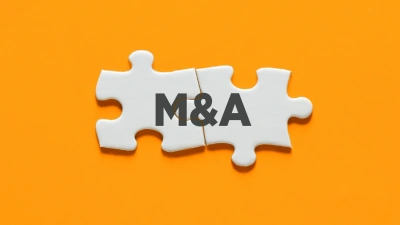SMSFs and platforms: friends or foes?



Platforms like HUB24 and Netwealth are innovating the superannuation sector, giving users rich online trading and management functionality, and providing them with a level of choice larger than standard retail and industry funds.
Platform super products like Netwealth’s Super Accelerator Plus and HUB24’s Super Fund - Personal Super (Choice Menu) offer Australian retail clients the investment choice and flexibility that was once only found in self-managed super funds (SMSFs).
So that begs the question, will super products offered by platforms eat into the market share of SMSFs?
A PICTURE OF THE INDUSTRY
At 30 June, 2021, there were about 1.1 million members in SMSFs according to data from the Australian Taxation Office, compared to over 21 million member accounts in Australian Prudential Regulation Authority (APRA) regulated funds.
Recent data from the Australian Taxation Office (ATO) shows the SMSF sector has grown by an annual average of 1.7% in the five years to 2020-21 (Table 1).
New funds in 2016-17 fell from about 30,000 to 20,000 in 2018-19 then increased again to 25,000 in 2020-21. On the other hand, SMSF windups rose from 13,691 in 2015-16 to 24,898 in 2017-18 then fell drastically from 15,956 in 2019-20 to 2,187 in 2020-21.
SMSF Association deputy chief executive and director of policy and education, Peter Burgess, highlighted how 2020-21 saw the largest increase in new fund establishments since 2017-18 while wind-ups had also declined in recent years, throwing doubt on the idea that platforms were threatening SMSFs.
“History shows that SMSFs have greater appeal during a crisis. It happened after the Global Financial Crisis (GFC) in 2008 and is happening during COVID-19.
“The anecdotal evidence as to why this is the case is that in crises, people want direct control over their superannuation. The notion, especially after the GFC, that individuals would return to the sanctuary in the APRA-regulated superannuation system, just wasn’t supported by the numbers.”
Based on these ATO statistics, Burgess says there is no evidence that SMSFs are in structural decline.
So, if there is no evidence of structural decline in SMSFs, as Burgess says, and no evidence of platforms impacting market share of SMSFs, is there any potential for impacts in the future?
PLATFORMS
Platform super accounts target affordable price points and generally have a wide array of investment options, offering members the choice to buy and sell managed funds, managed accounts, exchange traded funds (ETFs), along with local and international securities in their super portfolio.
Mario Finocchiaro, national operations manager of Australian Mortgage and Financial Advisers, says there is potential for platform innovations to place pressure on SMSF market share.
“For many, having the ability to take control of their super is appealing, accompanied by the fact that you can choose your own superannuation investments also provides a sense of independence,” he said.
“So, if you are committed, you have the time and you understand the risks then a SMSF may be the right vehicle to save for your future retirement.
“However, platform innovations now allow you to take control of your super with potentially reduced fees. This hybrid solution will be attractive to those investors wanting to manage their own affairs in a simpler controlled environment.
“These types of innovations may very well place pressure on SMSF’s market share.”
Burgess takes a different stance.
“For many investors, platforms are not a direct substitute or replacement for an SMSF so the growth of one doesn’t mean the decline of the other. There is a place for both and, in fact, the two can and do complement each other,” Burgess said.
“For example, some platforms can enable, or make it easier, for an SMSF to access investment markets which they may not otherwise have access to.”
Matt Heine, joint managing director of platform provider Netwealth, said platforms instead should be considered as a tool for SMSF trustees to easily manage their investments, supporting the idea that platforms were complementing SMSFs.
“We have found that this type of investment account is a useful option for SMSFs, so instead of replacing the SMSF, it is used by them to provide a centralised place for them to manage their investments – the benefits include consolidated performance and tax reporting plus just simpler administration,” Heine said.
“The investment universe available on platforms is also ever-expanding, so that account holders are able to buy and sell often hard-to-access investments, such as bonds and even international securities.
“For younger investors considering SMSFs, which is certainly a trend we are seeing, they may however want to look at a platform’s super account, as many of the investments they are interested in, such as international technology stocks or ‘green’ ETFs are available, without the time and effort required to setting up and managing a SMSF.”
Responding to Money Management, platform provider HUB24 said the question was not whether platform super funds would take over SMSFs, but rather how could platforms help SMSF clients reach their retirement goals?
“They provide transparency in their investment portfolio while also allowing SMSF members to access the benefits of investment choice, beneficial ownership, flexibility, tax optimisation and accessing timely professional portfolio management expertise.”
Further illustrating its presence in the SMSF sector, HUB24 said SMSFs accounted for more than 25% of funds under management (FUM) on its platform and that its recent acquisition of SMSF administration software provider Class highlighted its commitment to the sector.
Meanwhile, 41% of its active advisers have a SMSF client on the platform and SMSF accounts on the HUB24 IDPS (Investor Directed Portfolio Service) has been growing at an average of 20% per annum for the last three years.
DIFFERENCES
Burgess said most individuals set-up SMSFs because of the investment flexibility and control they provide. He also said platforms continue to evolve but compared to an SMSF, they lacked the same level of investment flexibility and sense of control.
“For example, platforms typically don’t cater for direct property investments which is a popular asset class for SMSF investors (around 20% of SMSFs hold real property in their fund),” Burgess said.
He said platforms typically provide a menu of investment options which investors are required to choose from.
“While many investment menus are comprehensive, they still may not provide access to specific investments that an SMSF member may want. For example, as at 30 June, 2020, over 23% of SMSFs have investments in unlisted trusts, 3% have investments in loans and just under 7% have investments in unlisted shares.
“Platforms may impose restrictions on corporate action participation and they may also impose restrictions on how much can be invested in each asset as well as a requirement to maintain a minimum amount of cash in your portfolio at all times.
“For many SMSF clients, having their superannuation investments registered in their name as the trustee of their fund, or in the name of their corporate trustee, provides the ultimate level of flexibility and sense of control.”
HUB24 said SMSFs were popular for the control and transparency they offered members, but some challenges included administration and reporting, portfolio diversification, cost-effectiveness and access to international assets.
“Through managed portfolios, advised SMSF clients can access cost-effective international asset exposure via managed funds, managed portfolios, direct international equities and low-cost investment options such as ETFs.
“This investment choice offers SMSFs greater opportunities to achieve diversification within their investment portfolio and to capture the benefits of uncorrelated asset classes which can add to overall performance.”
HUB24 said its managed portfolios offered “innovative functionality” such as tax optimisation which could add value to client portfolios. This was because it could provide the ability to choose and apply tax methods that best suited an investor’s individual tax circumstances, stock substitution and exclusion and provided greater flexibility to tailor a portfolio to the needs of the SMSF members while leveraging the expertise of professional portfolio managers.
Heine from Netwealth said the differences between SMSFs and superannuation funds were certainly narrowing, yet there would always be differences.
“So depending on the individual needs of the investor, there will be a place for both,” he said.
“For example, if the investor is looking to hold more exotic-like investments which a platform cannot hold in custody, like private equity or commercial property, the SMSF structure will be relevant. At Netwealth, we have designed our technology and account options to support the needs of investors either way.”
For Finocchiaro, even though he believed there was potential for platforms to eat into SMSF market share, he also said there was a place for both when providing advice depending on the clients’ capabilities.
“It really comes down to what’s in the best interest of the client.
“What are the goals and objectives of the client? What would be the best option to achieve these goals?
“But also, it’s about understanding the client themselves. Do they have the ability and required knowledge in dealing with investment markets, investment strategy and the account keeping requirements?
Recommended for you
Marking off its first year of operation, Perth-based advice firm Leeuwin Wealth is now looking to strengthen its position in the WA market, targeting organic growth and a strong regional presence.
In the latest edition of Ahead of the Curve in partnership with MFS Investment Management, senior managing director Benoit Anne explores the benefits of adding global bonds to a portfolio.
While M&A has ramped up nationwide, three advice heads have explored Western Australia’s emergence as a region of interest among medium-sized firms vying for growth opportunities in an increasingly competitive market.
Private wealth firm Escala Partners is seeking to become a leading player in the Australian advice landscape, helped by backing from US player Focus Financial.










